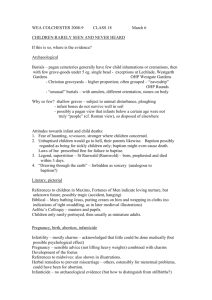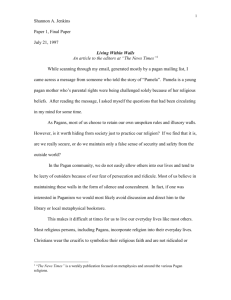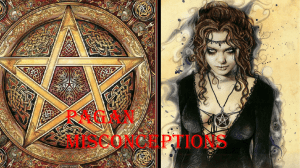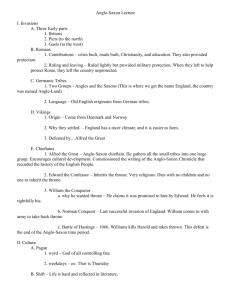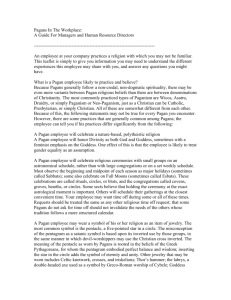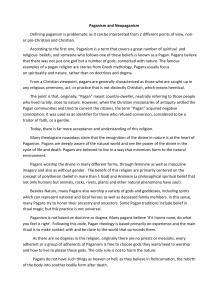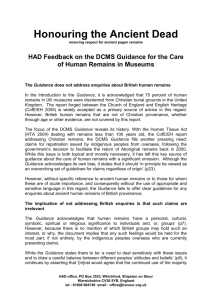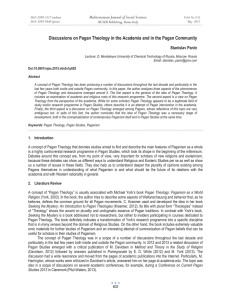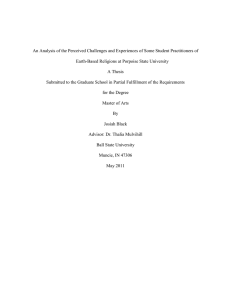Emotion, cognition, and action
advertisement
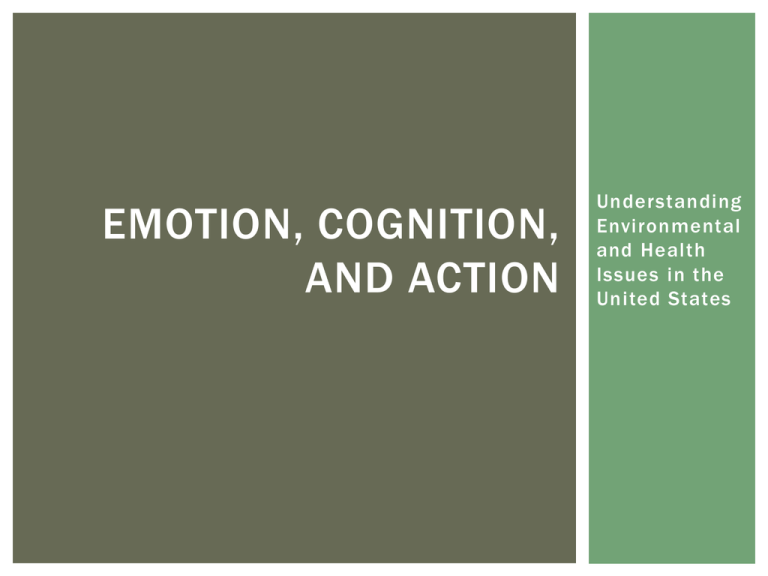
EMOTION, COGNITION, AND ACTION Understanding Environmental and Health Issues in the United States ENTERING ANTHROPOLOGY FROM THE APPLIED PERSPECTIVE What problems do I want to solve? What do I care about? Health care access The experience of vulnerable people Sustainability How can I address these issues? PROJECT 1: RANGELANDS AND RANCHING CULTURE The problem: What leads to sustainable vs. unsustainable rangeland management? The issues: Ranchers’ LEK and rangeland management practice Decision-making and the influence of policy and global markets Ranching culture and landscape and its relationship to rangeland politics The work: 2002: General Interviews 2003: Participant Observation 2005: Participant Observation, Depth Interviews, Decision Modeling 2012: 5-year follow -up Interviews DECISION MAKING AND CULTURAL MODELS http://img.mailchimp.com/2008/02/15/9qqoqe09t39d0ktta8cq06b1j0/ConflictCircleWiresCrossed(2).jpg Decision-making models link: Policy Market LEK Personal preferences Cultural patterns Cultural models identify: Worldview differences Valuation of knowledge systems Cultural storylines and pictures that make sense to people Emotional attachments Why care? Fosters cross-cultural understanding Identifies counter-productive forces in policy, market, etc. Can we make sense out of this in a way that assists in mediating conflict for group decision-making? Changing patterns of production… Do you feel that participating in the program compromises your independence? YES YES NO NO Do you value the feeling of independence more than any benefits that you could acquire? Is participating in the program more expensive than not participating in it? YES NO DON’T YES Given the monetary and labor costs, would you make more money if you participated in the program than if you sold independently? Would you have to change your management plan to participate in the program? NO YES NO NO Is the convenience and/or lowered risk worth the lost profits? YES Would participating in the program increase your profits? YES NO HARRIS RANCH YES Is getting information back on your calves worth the lost profits? NO Do you believe that such partnerships are where the cattle industry is headed, and that it is good to proactively get involved? YES HARRIS RANCH YES Do you believe Harris Ranch is the best option to accomplish this? NO NO DON’T Participation in Harris Ranch Program LAND USE, LANDSCAPES, AND ENVIRONMENTAL HEALTH What questions were not addressed? Settlement and land use patterns over time Understanding LEK in place The complex relationship between: Specific policies at certain places Decisions about land use and management Environmental health GIS and ethnographic work Mental maps Social and natural history of landscape Cultural and individual memory and knowledge PROJECT 2: THE PAGAN HEALTH SURVEY PROJECT The average Pagan: Female and White. She may be from anywhere in the country. She is between the ages of 36 and 50, and has been a Pagan for 17 years. She is middle class and collegeeducated. She is almost as likely to selfidentify as nonheteronormative as she is to selfidentify as “woman” and “straight/ heterosexual.” The problem: How do Pagan people interact with the biomedical health care system and other forms of treatment? The issues: Pagan worldviews about health, healing, and wellness Pagan choices and practices related to health Problems in access to and successful integration with the biomedical health care system The work: 2005-2012: General Participant Observation 2010: Survey and Interview Schedule 1,598 participants in sur vey Depth inter views with nine clergy and health care practitioners HEALING •Energy (107) •Balance(48) •Love (42) This became an introduction for doctors, nurses, and other practitioners to their patient… •Natural (70) •Spiritual (63) •Holistic (44) Spiritual Associations: 400 Responses Types of Healing: 323 Responses Healing Practices: 302 Responses What Healing Means: 345 Responses •Reiki (52) •Meditation (40) •Rest (37) •Magic (32) Number of responses in parentheses. … and a point to rally around for Pagans, helping them recognize their solidarity. •Restoration (43) •Wholeness (35) •Recovery (32) Percent THE ROLE OF SPIRITUAL LEADERS: WHEN A PRIEST/ESS IS CALLED FOR HELP 80 70 60 50 40 30 20 10 0 This became a point of discussion with health care practitioners, giving voice to Pagans’ experiences of prejudice and discrimination. It became a rallying point for Pagan mental health professionals to organize. PAGAN HEALTH SURVEY PROJECT, 2 YEARS LATER: MENTAL HEALTH Pagan-friendly mental health professionals can be found and contacted Mental health community is prepared Clergy are prepared • • • Recognize mental illness Talk to people about finding help Offer referrals to Pagan-friendly mental health professionals • Better Linkages • • Can differentiate between mental illness and Pagan beliefs/practices Are culturally competent Can relate to Pagan patients PAGAN HEALTH SURVEY PROJECT, 2 YEARS LATER: HEALTH CARE ACCESS 46.9% Incomes less than $25,000 Affordable Group Plan Insurance 33% Ethnic minorities 29% Live in rural areas Elder Care Women’s and LGBTQ Health 28.3% LGBTQ (despite higher education levels) 25.3% Average Who lacks health insurance? PROJECT 3: PAGANISM AND SUSTAINABILIT Y The problem: How does ritual emplacement and enactment of nature spirit belief relate to sustainable behavior in daily life? The issues: How Pagans use ritual to emotionally link people to place and teach them about nature How ritual shapes and reflects Pagan beliefs about nature How ritual relates to individual commitment and behaviors in nonritual space and time The work (coming 201 2 -13): 8 seasonal festivals: Druidic and Wiccan 4 major Druidic and fairy -centered large-scale rituals Interviews Survey CONTRACT PROJECTS: HAVE METHODS, WILL TRAVEL Service to community, especially to nonprofits: Assessing Current Program Finding Challenges and Opportunities Sustaining Funding Making Data-Driven Changes Explaining Evaluations Organizational analysis Program design Evaluations Long-term vision: Serving community Serving students Serving the discipline THE BIG QUESTIONS What constructs the human experience, individually and collectively? How can we get people to think “good” thoughts and do “good” things? How do we define “good”? Worldview and Religion Natural Environment Cognitive Patterns Body Personality History Built Environment How do people think of new ideas and choose to behave in new ways? Why sometimes and not others? Economy
